Analysis on the Optimal Recycling Path of Chinese Lead-Acid Battery under the Extended Producer Responsibility System
Abstract
:1. Introduction
2. Materials and Methods
2.1. Comparative Analysis of Typical Recycling Modes
2.1.1. Reverse Recycling Mode of Production Enterprises
2.1.2. Alliance Recovery Mode
2.1.3. Third-Party Social Recycling Mode
2.2. Basic Assumptions
- Assuming that the unit recovery cost of the production enterprise is , and the recovery rate is , then . This article assumes that the variable cost is zero for waste lead batteries recycled by the production enterprise to simplify the theoretical model.
- The manufacturer’s price of recycling lead-acid waste batteries is b. At this point , companies need to face several costs in the actual recycling process, such as transportation and storage. Suppose the unit investment in fixed assets is I. Among them: , the convexity and incrementality of this function reflect that producers need to increase investment in the collection process if they want to achieve a higher rate of return. K stands for other influencing factors the company faces in the recycling process.
- Assuming that the unit cost is if the recycled lead storage battery is used to produce new lead storage battery products. The unit cost of using virgin materials to make lead storage batteries is , and the new product is homogeneous, then the unit cost of producing lead storage batteries is:
- 4.
- Assume that the demand function for lead-acid battery recycling is ,, for the size of the entire market. Among them: . Since the production company can recycle it independently, it can also entrust a third party and seller. Therefore, there is a channel selection behavior during the recovery process. Based on the above conditions, and Savaskan and Van (2006) [15], Zheng et al. (2021) [16], and Zhao et al.’s (2020) [17] research and conclusions, we will discuss the behavioral choices of producers in different situations to obtain the best profit selection channels for manufacturers.
2.3. Analysis of the Model of Recycling Channels Dominated by Production Enterprises
2.3.1. Independent Recycling Channels for Production Companies (M)
2.3.2. Commission Alliance Recycling Channels (R)
2.3.3. Entrusting a Third-Party Enterprise to Recycle the Channel (C)
2.4. Subsection
3. Results and Discussion
- The cost of self-recovery of waste lead batteries by enterprises: Qufu City was 7500 CNY/ton, Xiangyang City was 7970 CNY/ton, Huzhou City was 8650 CNY/ton, which was the highest. That is, the repurchase price b was higher and was lower;
- When comparing the types of recycling enterprises entrusting to a third party, the unit cost of recycling waste lead batteries was 7600 CNY/ton for Qufu enterprises and 8560 CNY/ton for Huzhou enterprises (Xiangyang enterprises did not entrust to third parties for recycling). At this time, the repurchase price b for charging a third party for recycling was also higher. greatly increased the cost of using recycled lead in production enterprises;
- We inferred from the theoretical model. When the lead battery manufacturer’s remanufacturing cost advantage was higher than the recycling cost, companies were more enthusiastic about recycling waste lead batteries. The unit investment in fixed assets was about 11,000 CNY/ton in the production line of waste lead storage battery processing and utilization of enterprises in Huzhou City. This cost was higher than the investment levels of the enterprises in Xiangyang and Qufu, which increased the cost of the production of recycled lead.
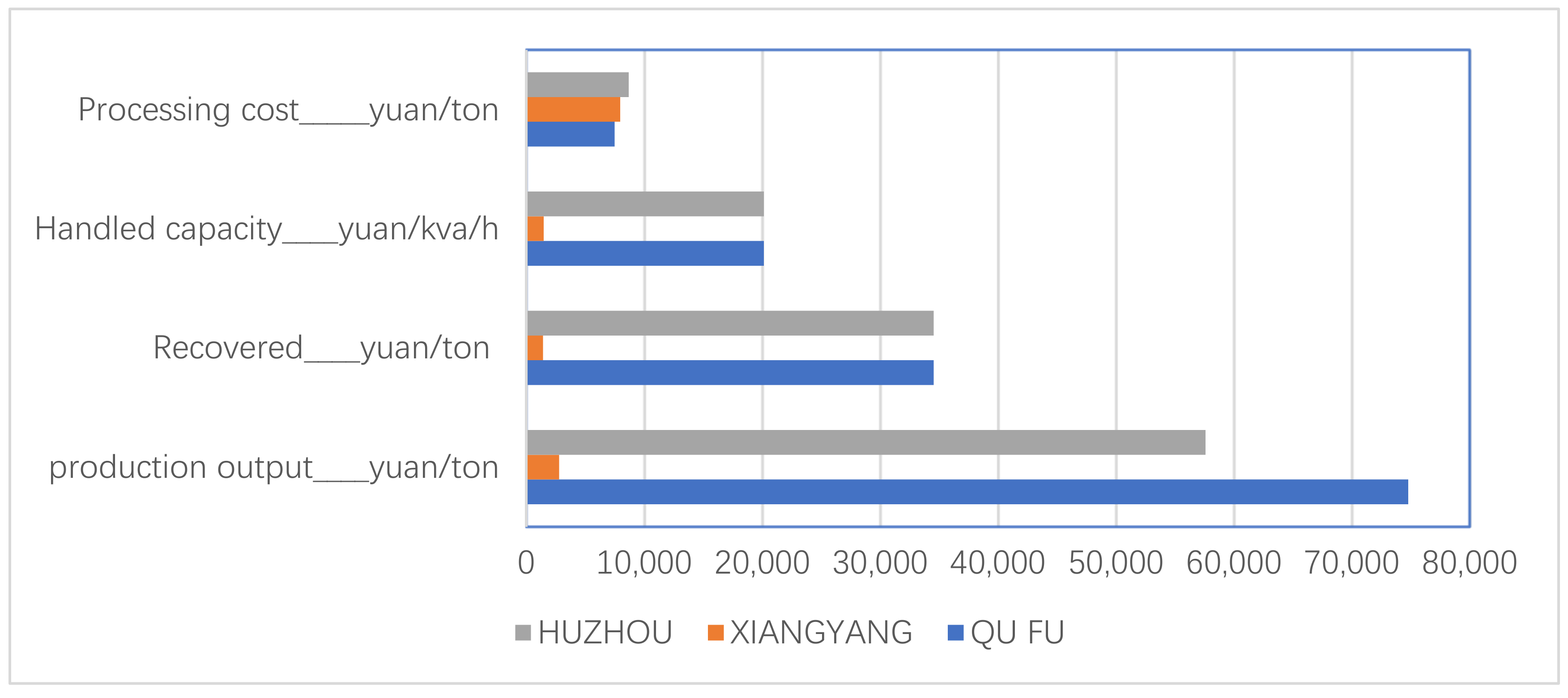
- First of all, the profit margin of independent recycling by producers is higher than that of entrusted third-party recycling, but the price level is also relatively high, which will affect the cost of enterprises using recycled lead to put into production;
- The optimal channel price for independent recycling by producers is higher than that of commissioned affiliate and third-party collectors. Compared with companies that recycle independently, companies that commission affiliates or third parties to recycle have an average annual recovery rate that is generally higher than that of companies that choose self-recycling networks;
- Compared with the self-recycling method, except for enterprises in Xiangyang City, when a third party was entrusted to recycle, the recycling price of enterprises in Qufu was 100 CNY/ton lower than that of the entrusted third party, and 50 CNY/ton lower than that of enterprises in Huzhou. Compared with other companies, similar results also appeared. Enterprises in Xiong’an New Area independently recycled waste lead batteries. The average unit price was about 700 CNY/ton lower than that of entrusted third parties, and 500 CNY/ton lower for enterprises in Yantai;
- In terms of the cost of dismantling and processing waste lead storage batteries, Xiangyang enterprises needed to invest 1400 CNY/ton, while Huzhou enterprises only needed to invest 650 CNY/ton. The theoretical derivation conditions of this paper were that in the remanufacturing process, when the saved cost was lower, dismantling waste lead batteries was higher. Because of dismantling costs, Xiangyang enterprises adopted independent recycling methods to carry out recycling and reuse activities, reducing the company’s profit level. The three companies all stated that the extraction of recycled lead from waste lead batteries would save 10–20% of the cost of production compared to the production of directly using lead raw materials.
4. Conclusions
Author Contributions
Funding
Informed Consent Statement
Data Availability Statement
Conflicts of Interest
References
- Zhao, Y.; Peng, B.; Elahi, E.; Wan, A. Does the extended producer responsibility system promote the green technological innovation of enterprises? An empirical study based on the difference-in-differences model. J. Clean. Prod. 2021, 319, 128631. [Google Scholar] [CrossRef]
- Xu, J.; Ye, M.; Lu, W.; Bao, Z.; Webster, C. A four-quadrant conceptual framework for analyzing extended producer responsibility in offshore prefabrication construction. J. Clean. Prod. 2021, 282, 124540. [Google Scholar] [CrossRef] [PubMed]
- Maitre-Ekern, E. Re-thinking producer responsibility for a sustainable circular economy from extended producer responsibility to pre-market producer responsibility. J. Clean. Prod. 2021, 286, 125454. [Google Scholar] [CrossRef]
- Pazoki, M.; Zaccour, G. Dynamic strategic interactions between a municipality and a firm in the presence of an extended producer responsibility regulation. J. Clean. Prod. 2021, 292, 125966. [Google Scholar] [CrossRef]
- Wang, Z.; Wang, Q.; Chen, B.; Wang, Y. Evolutionary game analysis on behavioral strategies of multiple stakeholders in E-waste recycling industry. Resour. Conserv. Recycl. 2020, 155, 104618. [Google Scholar] [CrossRef]
- Li, Y.; Yang, D.; Sun, Y.; Wang, Y. Motivating recycling behavior—Which incentives work, and why? Psychol. Mark. 2021, 38, 1525–1537. [Google Scholar] [CrossRef]
- Bassi, S.A.; Boldrin, A.; Faraca, G.; Astrup, T.F. Extended producer responsibility: How to unlock the environmental and economic potential of plastic packaging waste? Resour. Conserv. Recycl. 2020, 162, 105030. [Google Scholar] [CrossRef]
- Tian, F.; Sošić, G.; Debo, L. Stable recycling networks under the Extended Producer Responsibility. Eur. J. Oper. Res. 2020, 287, 989–1002. [Google Scholar] [CrossRef]
- Leclerc, S.H.; Badami, M.G. Extended producer responsibility for E-waste management: Policy drivers and challenges. J. Clean. Prod. 2020, 251, 119657. [Google Scholar] [CrossRef]
- Shooshtarian, S.; Maqsood, T.; Wong, P.S.P.; Khalfan, M.; Yang, R.J. Extended Producer Responsibility in the Australian Construction Industry. Sustainability 2021, 13, 620. [Google Scholar] [CrossRef]
- Rahmani, M.; Gui, L.; Atasu, A. The Implications of Recycling Technology Choice on Extended Producer Responsibility. Prod. Oper. Manag. 2021, 30, 522–542. [Google Scholar] [CrossRef]
- Hou, J.; Zhang, Q.; Hu, S.; Chen, D. Evaluation of a new extended producer responsibility mode for WEEE based on a supply chain scheme. Sci. Total Environ. 2020, 726, 138531. [Google Scholar] [CrossRef]
- Gong Wang, C.; Juan Liu, J. Evolutionary Game Analysis of Recycling Management of Waste Power Batteries of New Energy Vehicles; IOP Conference Series: Earth and Environmental Science; IOP Publishing: Bristol, UK, 2021; Volume 766, p. 012077. [Google Scholar]
- Tang, Y.; Zhang, Q.; Li, Y.; Wang, G.; Li, Y. Recycling mechanisms and policy suggestions for spent electric vehicles’ power battery—A case of Beijing. J. Clean. Prod. 2018, 186, 388–406. [Google Scholar] [CrossRef]
- Savaskan, R.C.; Van Wassenhove, L.N. Reverse channel design: The case of competing retailers. Manag. Sci. 2006, 52, 1–14. [Google Scholar] [CrossRef] [Green Version]
- Zheng, B.; Chu, J.; Jin, L. Recycling channel selection and coordination in dual sales channel closed-loop supply chains. Appl. Math. Model. 2021, 95, 484–502. [Google Scholar] [CrossRef]
- Zhao, Y.; Wang, W.; Ni, Y. EPR system based on a reward and punishment mechanism: Producer-led product recycling channels. Waste Manag. 2020, 103, 198–207. [Google Scholar] [CrossRef]
- Dixit, A.K.; Stiglitz, J.E. Monopolistic competition and optimum product diversity. Am. Econ. Rev. 1977, 67, 297–308. [Google Scholar]
- Ezeah, C.; Fazakerley, J.A.; Roberts, C.L. Emerging trends in informal sector recycling in developing and transition countries. Waste Manag. 2013, 33, 2509–2519. [Google Scholar] [CrossRef]
- Fei, F.; Qu, L.; Wen, Z.; Xue, Y.; Zhang, H. How to integrate the informal recycling system into municipal solid waste management in developing countries: Based on a China’s case in Suzhou urban area. Resour. Conserv. Recycl. 2016, 110, 74–86. [Google Scholar] [CrossRef]
- Fernando, R.L.S. Solid waste management of local governments in the Western Province of Sri Lanka: An implementation analysis. Waste Manag. 2019, 84, 194–203. [Google Scholar] [CrossRef]
- Fujii, M.; Fujita, T.; Ohnishi, S.; Yamaguchi, N.; Yong, G.; Park, H.S. Regional and temporal simulation of a smart recycling system for municipal organic solid wastes. J. Clean. Prod. 2014, 78, 208–215. [Google Scholar] [CrossRef]
- Johannes, H.P.; Kojima, M.; Iwasaki, F.; Edita, E.P. Applying the extended producer responsibility towards plastic waste in Asian developing countries for reducing marine plastic debris. Waste Manag. Res. 2021, 39, 690–702. [Google Scholar] [CrossRef] [PubMed]
- Li, X.; Mu, D.; Du, J.; Cao, J.; Zhao, F. Game-based system dynamics simulation of deposit-refund scheme for electric vehicle battery recycling in China. Resour. Conserv. Recycl. 2020, 157, 104788. [Google Scholar] [CrossRef]
- Meng, X.; Wen, Z.; Qian, Y. Multi-agent based simulation for household solid waste recycling behavior. Resour. Conserv. Recycl. 2018, 128, 535–545. [Google Scholar] [CrossRef]
- Sun, Z.; Cao, H.; Zhang, X.; Lin, X.; Zheng, W.; Cao, G.; Sun, Y.; Zhang, Y. Spent lead-acid battery recycling in China—A review and sustainable analyses on mass flow of lead. Waste Manag. 2017, 64, 190–201. [Google Scholar] [CrossRef] [PubMed]
- Song, X.; Hu, S.; Chen, D.; Zhu, B. Estimation of waste battery generation and analysis of the waste battery recycling system in China. J. Ind. Ecol. 2017, 21, 57–69. [Google Scholar] [CrossRef]
- Tian, X.; Gong, Y.; Wu, Y.; Agyeiwaa, A.; Zuo, T. Management of used lead acid battery in China: Secondary lead industry progress, policies and problems. Resour. Conserv. Recycl. 2014, 93, 75–84. [Google Scholar] [CrossRef]
- Sun, M.; Yang, X.; Huisingh, D.; Wang, R.; Wang, Y. Consumer behavior and perspectives concerning spent household battery collection and recycling in China: A case study. J. Clean. Prod. 2015, 107, 775–785. [Google Scholar] [CrossRef]
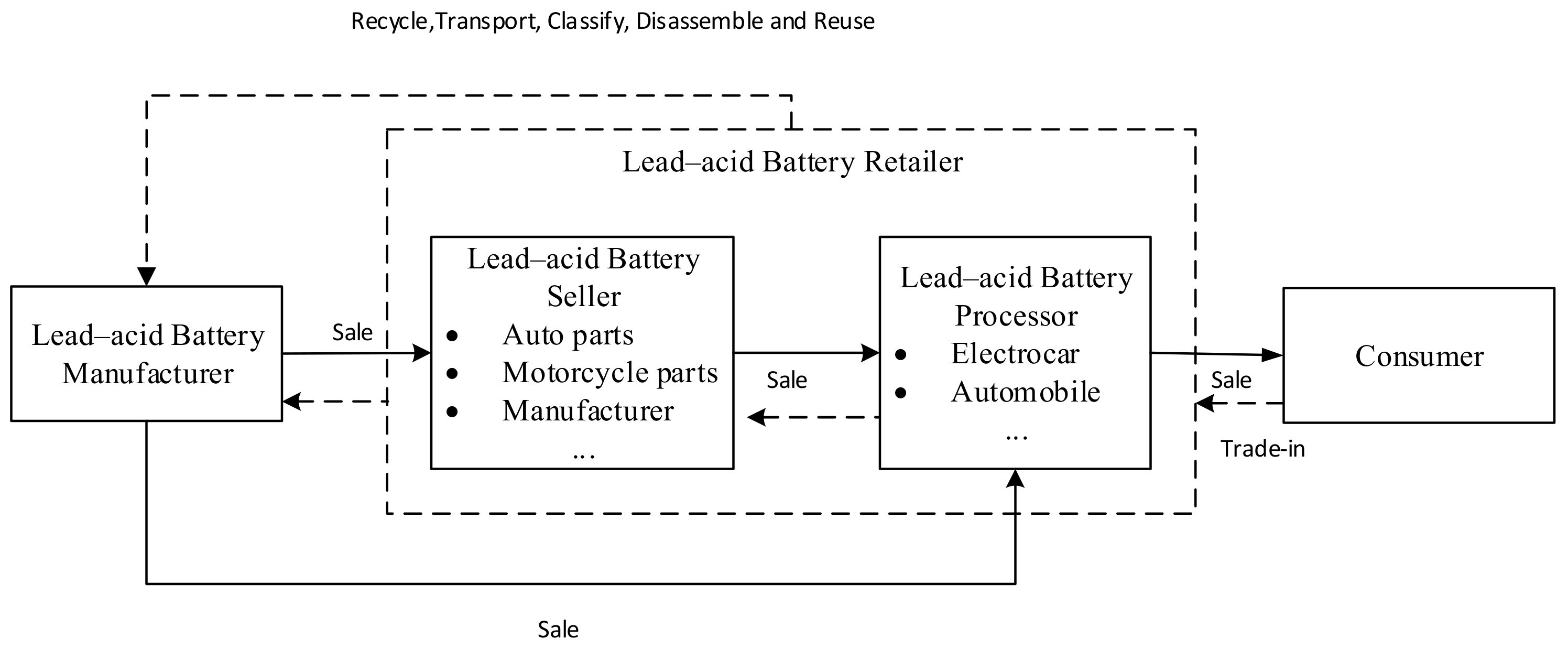
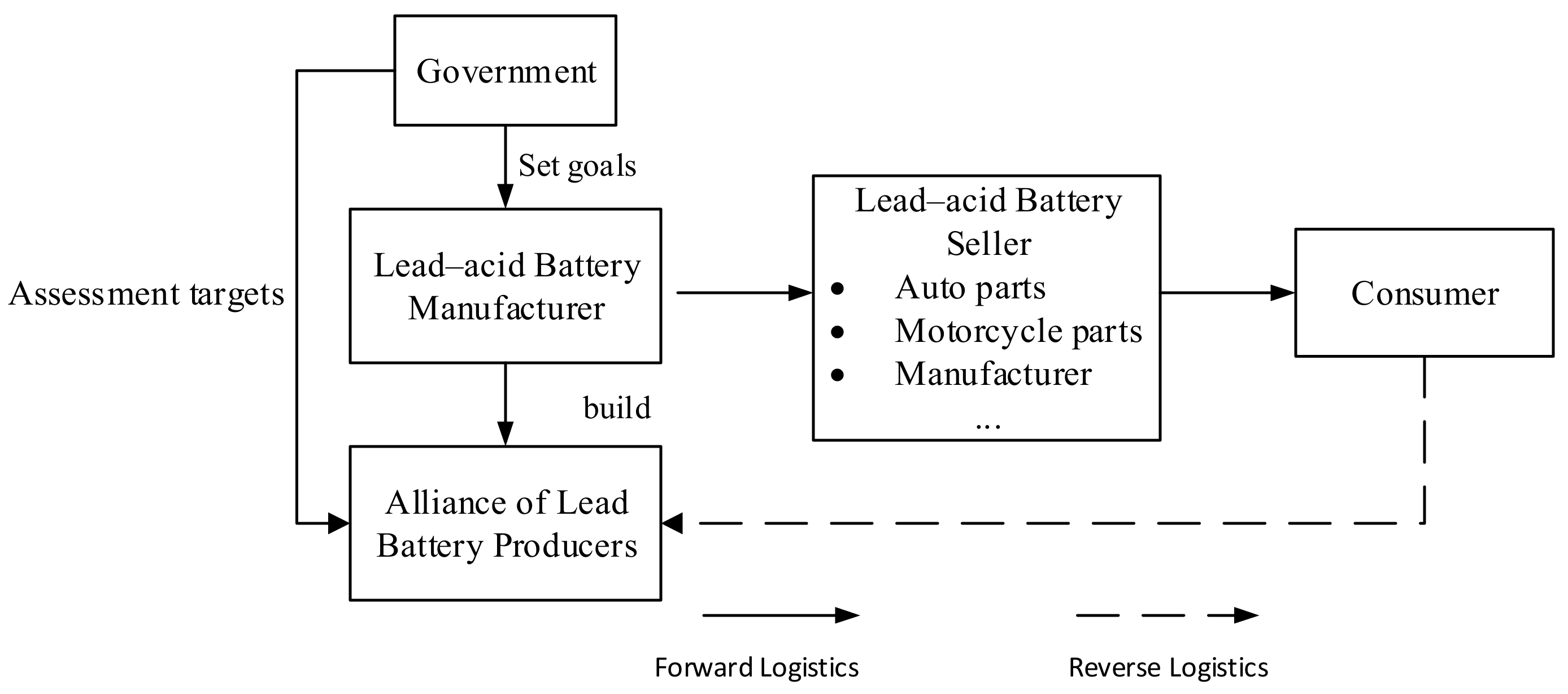


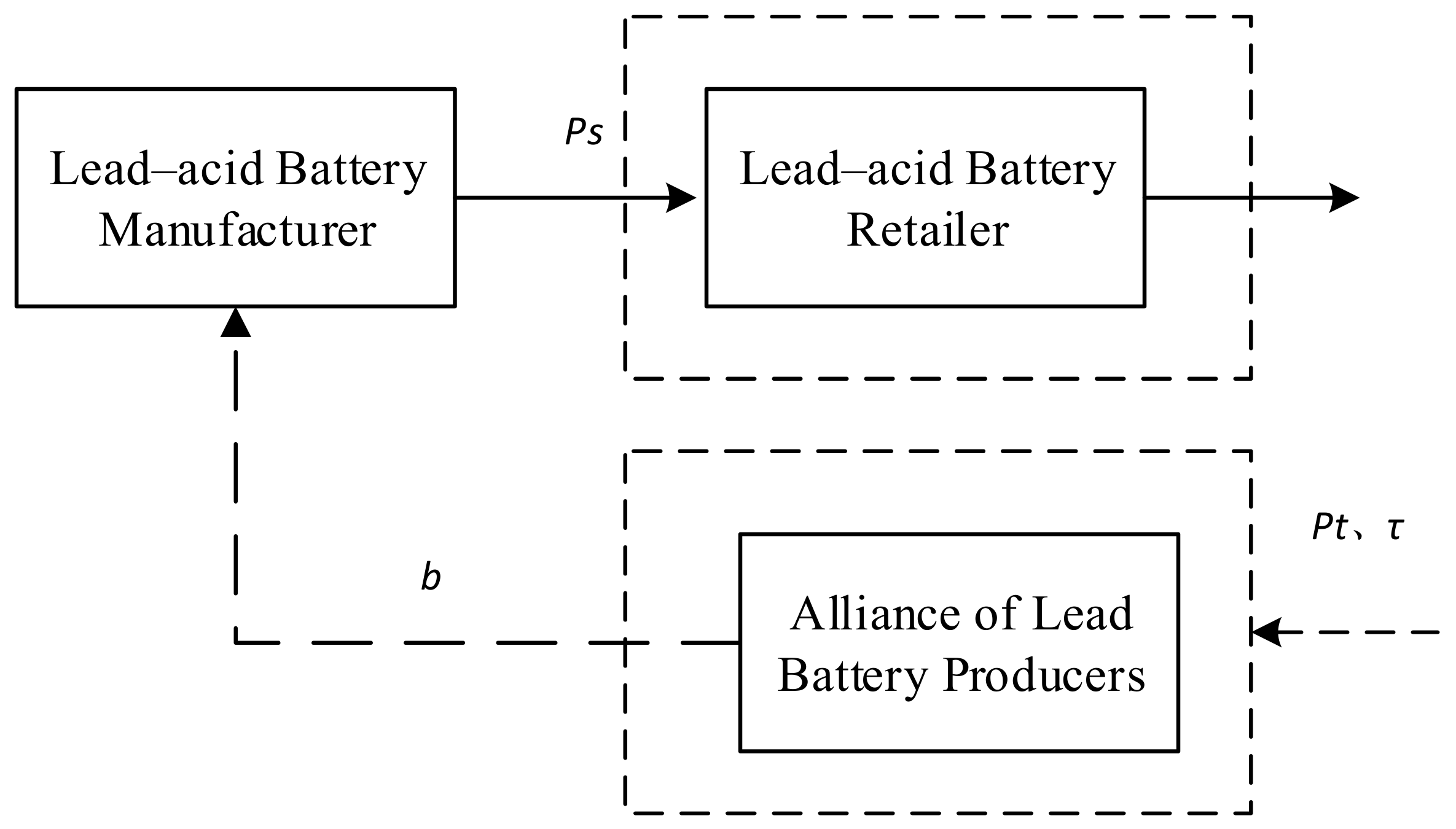

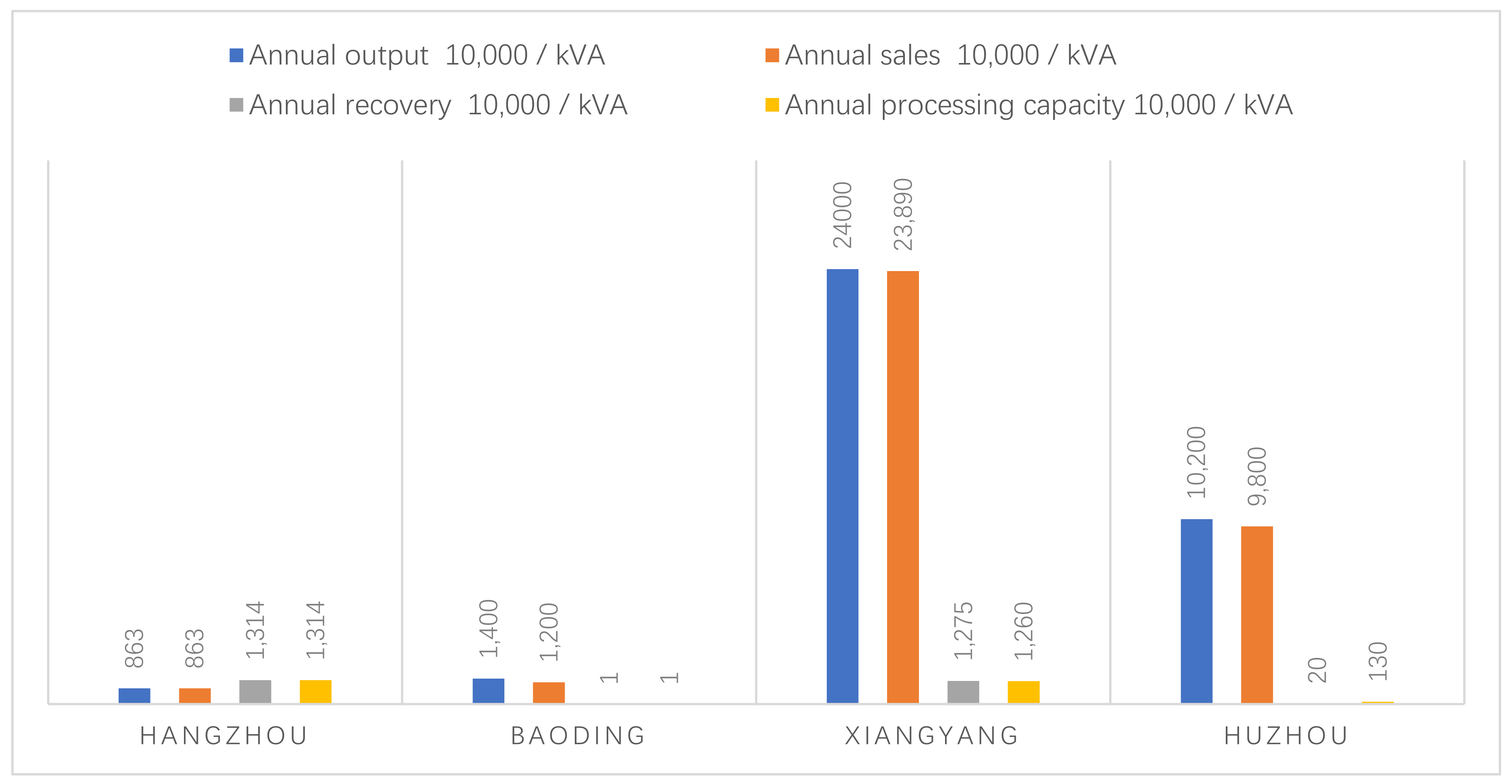
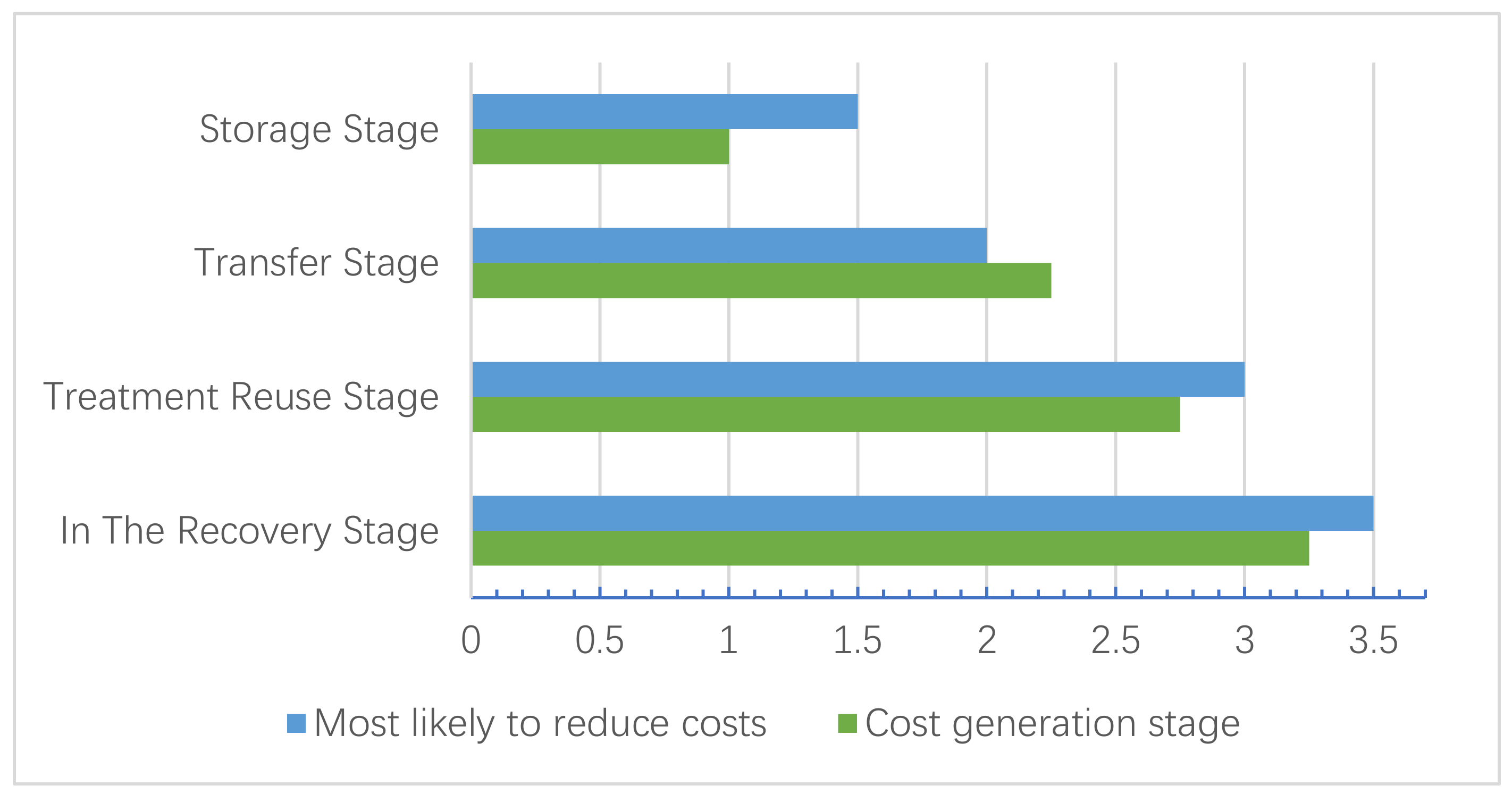
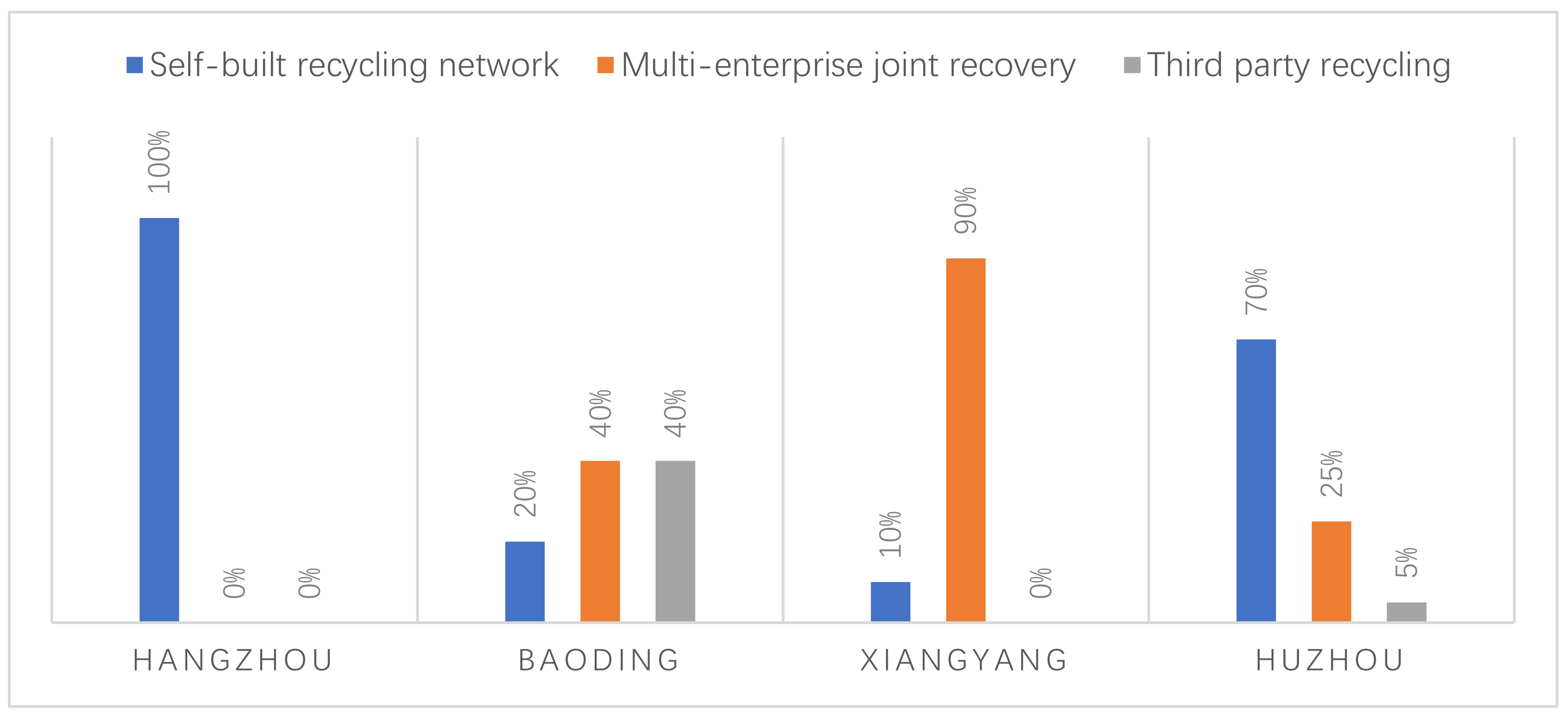
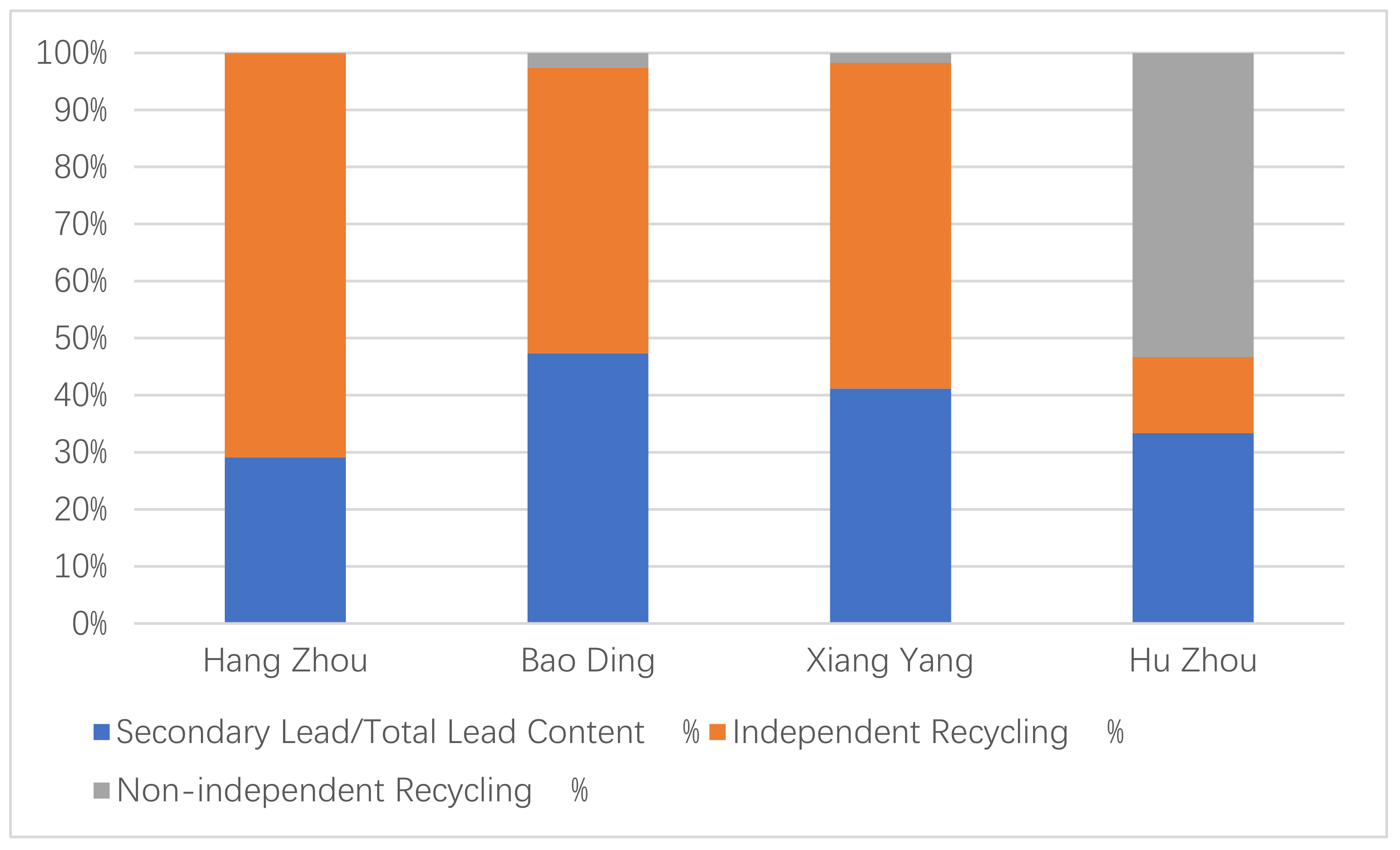
| Model | Compare Results | |
|---|---|---|
| Model M | ||
| Model R | ||
| Model C | ||
| Model M | ||
| Model R | ||
| Model C | ||
| Model M | ||
| Model R | ||
| Model C |
Publisher’s Note: MDPI stays neutral with regard to jurisdictional claims in published maps and institutional affiliations. |
© 2022 by the authors. Licensee MDPI, Basel, Switzerland. This article is an open access article distributed under the terms and conditions of the Creative Commons Attribution (CC BY) license (https://creativecommons.org/licenses/by/4.0/).
Share and Cite
Zan, X.; Zhang, D. Analysis on the Optimal Recycling Path of Chinese Lead-Acid Battery under the Extended Producer Responsibility System. Sustainability 2022, 14, 4950. https://doi.org/10.3390/su14094950
Zan X, Zhang D. Analysis on the Optimal Recycling Path of Chinese Lead-Acid Battery under the Extended Producer Responsibility System. Sustainability. 2022; 14(9):4950. https://doi.org/10.3390/su14094950
Chicago/Turabian StyleZan, Xin, and Deyuan Zhang. 2022. "Analysis on the Optimal Recycling Path of Chinese Lead-Acid Battery under the Extended Producer Responsibility System" Sustainability 14, no. 9: 4950. https://doi.org/10.3390/su14094950
APA StyleZan, X., & Zhang, D. (2022). Analysis on the Optimal Recycling Path of Chinese Lead-Acid Battery under the Extended Producer Responsibility System. Sustainability, 14(9), 4950. https://doi.org/10.3390/su14094950





